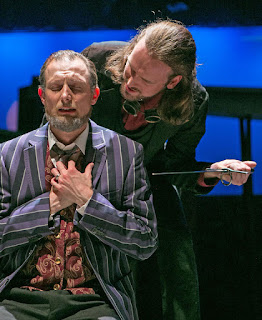Violin-piano duo offers a scintillating hour of new music, including a Frank Felice premiere

Frank Felice composed a sonata out of his faith to an Ascending commission. Musical groups that make their way into the classical-music world gain more than points for boldness if they specialize in new music. They also form connections with living composers and the people who follow them while honing their performing partnership in ways not available to adherents of traditional repertoire. Ascending is a local violin-piano duo providing a case in point. Formed in 2014, it has collaborated in multimedia events and played in unconventional venues in addition to commissioning new music. An hourlong recital Saturday afternoon at IUPUI introduced me to Ascending in a program of works by five composers, all of them very much alive and creating, with the exception of Olivier Messiaen (1908-1992). The rapturously played eighth movement of the French composer's Quartet for the End of Time was well-placed near the concert's end, just after the longest piece, "A Liturgy of













